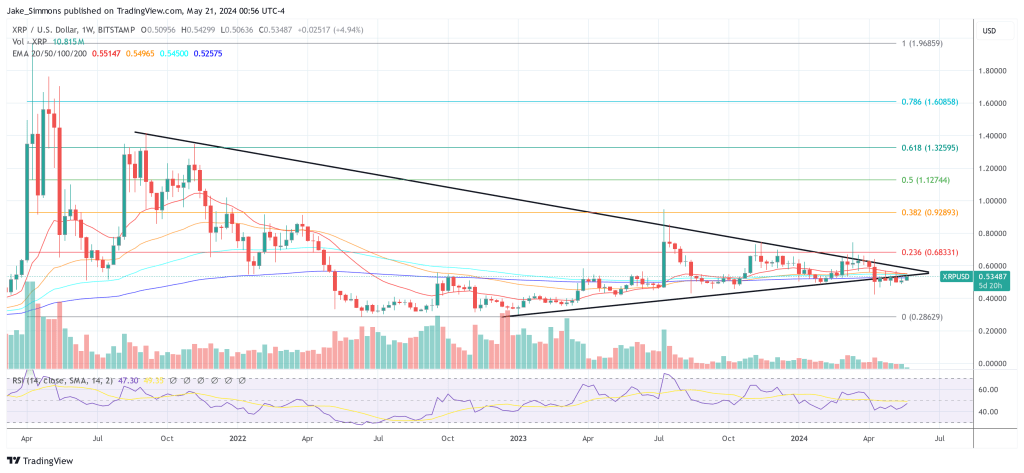As a seasoned crypto investor with a deep understanding of the market dynamics and regulatory landscape, I closely follow the Ripple vs. SEC case with great interest and concern. The latest court filings mark a pivotal moment in this landmark case that could significantly impact not only Ripple but also the broader crypto industry.
The dispute between Ripple Labs and the US Securities and Exchange Commission (SEC) has reached a new intensity with the SEC’s recent court document submission, which is the last filing before Judge Analisa Torres of the Southern District of New York considers the remedies in this groundbreaking case.
Ripple Vs. SEC: The Final Move
In a filing dated May 20, 2024, the Securities and Exchange Commission (SEC) strongly objected to Ripple’s request to keep certain financial documents and key evidence in the case under seal. The SEC’s letter to Judge Torres outlines their firm stance against Ripple’s motion, emphasizing the importance of making this financial data and contractual terms accessible for the court to consider when determining suitable penalties or remedies.
The SEC’s argument against your motion centers around the fundamental principle of public access to court records, a key component of legal openness and responsibility. Referencing Lugosch v. Pyramid Co. of Onondaga, the SEC underscores the significance of this tradition, particularly in matters pertaining to public welfare and regulatory oversight. As stated in their filing, “The long-standing right of public access to judicial documents is deeply ingrained in our country’s heritage.” The SEC emphasizes the importance of transparency for public examination and trust.
The SEC agrees to conceal the contents of five exhibits in their entirety. However, they dispute Ripple’s demand to hide crucial financial data and contractual information discussed during penalty considerations. This information encompasses Ripple’s present financial status, quantity of recent XRP sales, as well as revenue and expense particulars – details essential for evaluating the company’s adherence to regulations and calculating potential sanctions.
The SEC carefully examines Ripple’s reasons for seeking secrecy: “Ripple encourages the public to share their views on our stance. However, it is inconsistent for the company to conceal the underlying evidence supporting that position in public,” the SEC emphasized, highlighting a discrepancy between Ripple’s public statements and its court filings.
Ripple argues that keeping certain financial details private is necessary to protect its market standing, as exposing sensitive info could harm its competitive edge. The Securities and Exchange Commission (SEC), however, challenges this rationale by pointing out discrepancies in Ripple’s assessment of the relevance and confidentiality of the information at hand.
When the Commission disputes the assertion that sealed information holds no significance, it argues, “Once an item is identified as pertinent to wielding judicial authority under Article III, the importance assigned to the presumption of access should be determined by the material’s influence on this process.”
The SEC points out that some of the information Ripple aims to conceal is outdated and may not have a substantial impact on their present business activities. According to the SEC, old business records lack the necessary weight to establish any harm. This position reaffirms the importance of disclosing outdated financial details for transparency.
As Judge Torres readies herself to hand down her decision, the crypto community holds its breath in anticipation. The potential consequences are significant: The SEC has proposed fines and penalties totaling around $2 billion, while Ripple suggests a maximum fine of only $10 million.
At press time, XRP traded at $0.53487.

Read More
- SOL PREDICTION. SOL cryptocurrency
- LUNC PREDICTION. LUNC cryptocurrency
- BTC PREDICTION. BTC cryptocurrency
- USD ZAR PREDICTION
- USD CLP PREDICTION
- VANRY PREDICTION. VANRY cryptocurrency
- KATA PREDICTION. KATA cryptocurrency
- SEILOR PREDICTION. SEILOR cryptocurrency
- BLACK PREDICTION. BLACK cryptocurrency
- Best JRPGs That Focus On Monster Hunting
2024-05-21 09:26